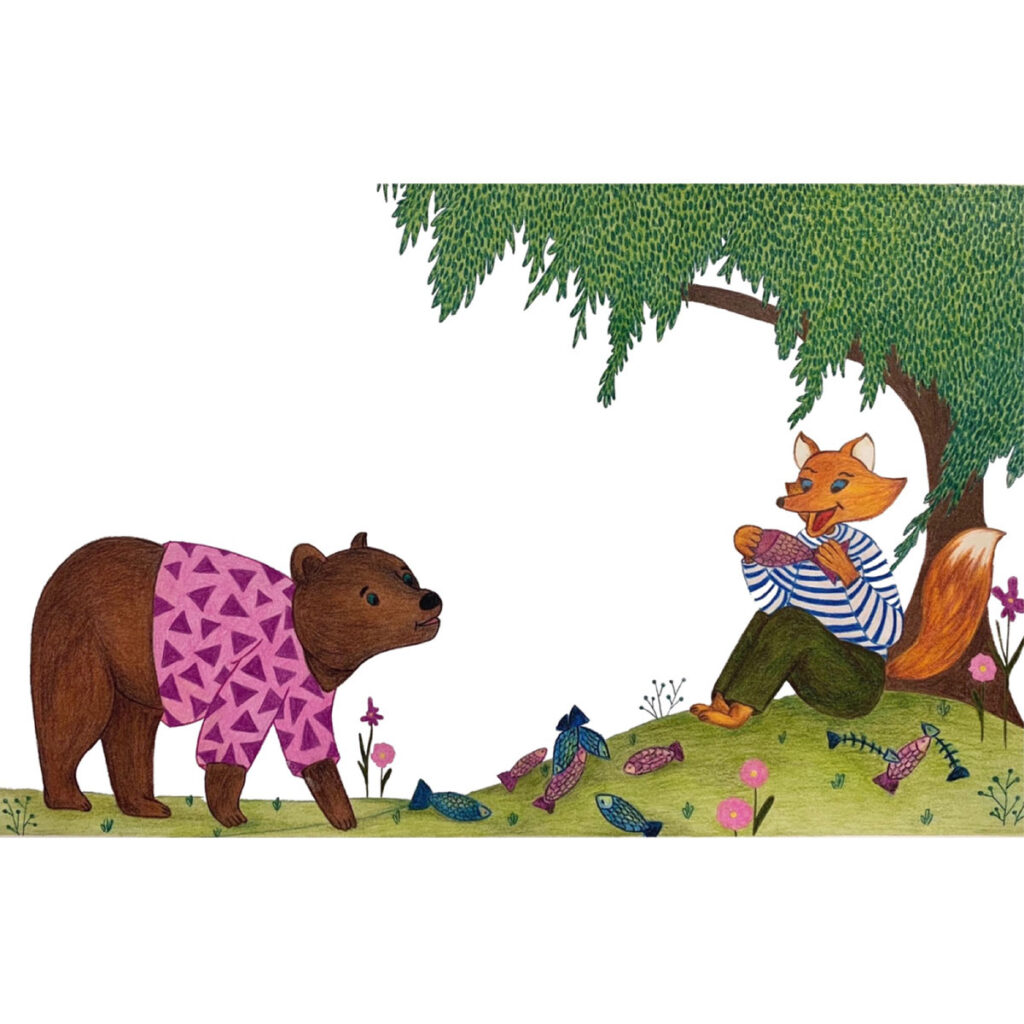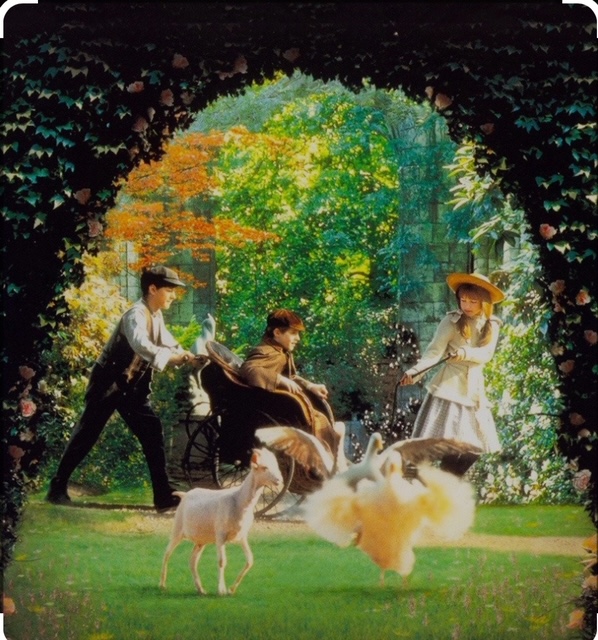
de Ion Creangă
Povestea este despre o vulpe și un urs. Vulpea este deșteaptă dar ursul nu.
Într-o zi, vulpei îi este foarte foame. Ea caută mâncare toată noaptea, dar nu găsește nimic. Dimineața, ea se întinde sub un tufiș lângă drum și se gândește cum să facă rost de mâncare.
Deodată îi miroase a pește. Ea ridică capul și vede un car cu pești. Un bărbat conduce căruța cu doi boi. Ea iese din tufiș și se întinde pe drum. Se preface că e moartă.
Căruța se apropie de vulpe. Bărbatul vede vulpea și crede că e moartă. Oprește boii și se duce sa ia vulpea. El vrea să-i ia blana pentru soția lui. O aruncă deasupra peștelui apoi le spune boilor să plece.
În timp ce boii merg, vulpea începe să împingă cu picioarele peștele din căruță. Omul conduce, căruța face zgomot, iar peștele cade din căruță.
După ce vulpea aruncă destul pește pe drum, sare din căruță și începe repede să ia peștele. Ea duce peștele acasă și începe să mănânce. Îi este foarte foame!
Chiar atunci vine și ursul și îi cere să împartă peștele cu el. Spune că și lui îi este foarte foame.
Vulpea refuză să împartă mâncarea cu el. Ea îi spune că a muncit din greu pentru acest pește. Ea îi spune să-și bage coada în apă, cum a făcut ea, și va avea pește de mâncat .
Ursul o roagă să-l învețe cum să prindă pește. Vulpea zâmbește și îi spune o minciună. Ea îi spune să meargă noaptea la lacul de lângă pădure și să-și bage coada în apă și să stea nemișcat până dimineața și atunci o va scoate plină cu pești.
Ursul îi mulțumește și aleargă repede spre lacul de lângă pădure. Își bagă coada în apă!
În acea noapte, vântul este rece și apa îngheață. Coada ursului este prinsă în gheață. După un timp, ursul nu mai suportă frigul și durerea din coadă. El o trage afară repede. Și, bietul urs, nu prinde nici un pește dar își pierde coada!
Începe să plângă și să sară în sus de durere. Este supărat pe vulpe. Vulpea deșteaptă știe să se ascundă de urs. Când vede ursul venind fără coadă, râde de el.
Ursul aude că ea râde de el și el este și mai supărat. Ursul încearcă să prindă vulpea dar nu poate.
Și așa ursul este păcălit de vulpe.
In English:
The story is about a fox and a bear. The fox is smart but the bear is not.
One day the fox is very hungry. He looks for food all night but finds nothing. In the morning, he lies down under a bush by the road and thinks about how to get food.
Suddenly it smells fishy. He looks up and sees a fish cart. A man drives the cart with two oxen. He comes out of the bush and lies down on the road. He pretends to be dead.
The wagon approaches the fox. The man sees the fox and thinks it is dead. He stops the oxen and goes to get the fox. He wants to take the fur for his wife. He throws it over the fish. Then he tells the oxen to go.
As the oxen walk, the fox begins to push the fish from the cart with his feet. The man drives, the cart makes a noise, and the fish falls out of the cart.
After the fox throws enough fish on the road, he jumps out of the cart and quickly starts to take the fish. He takes the fish home and starts eating. He is very hungry!
Just then the bear also comes and asks him to share the fish with him. He says he’s very hungry too.
The fox refuses to share. He tells him that he worked hard for this fish. He tells him to put his tail in the water, as he did, and he will have fish to eat.
The bear asks him to teach him how to catch fish. The fox smiles and tells him a lie. He tells him to go to the lake near the forest at night and stick his tail in the water and stay still until morning.
The bear thanks him and quickly runs to the lake near the forest. He sticks his tail in the water!
That night, the wind is cold and the water freezes. The bear’s tail is caught in the ice. After a while, the bear can no longer bear the cold and the pain in its tail. He pulls it out hard. And, poor bear, he doesn’t catch any fish but loses his tail!
He starts to cry and jump up in pain. He is angry with the fox. The clever fox knows how to hide from the bear. When he sees the bear coming without a tail, he laughs at him.
The bear hears him laughing at him and he is even angrier. The bear tries to catch the fox but can’t.
And so the bear is tricked by the fox.







